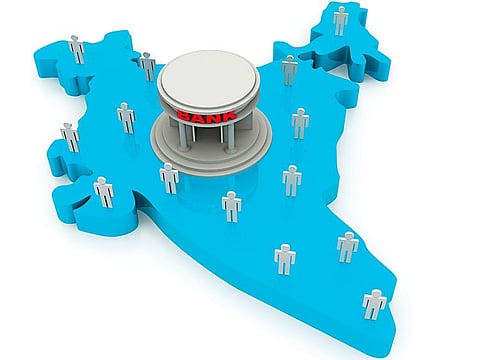India’s secret stimulus is a bad sign
For one, there is it’s dollar buying binge when the economy is supposedly growing at 7%

India’s Prime Minister Narendra Modi has an election to fight. So naturally, his government is touting statistics that show 7 per cent gross domestic product (GDP) growth in the fiscal year that ended last month, despite scepticism from the International Monetary Fund (IMF) among others.
As for jobs, the official version is that since there’s such high growth in output, they must exist. They just aren’t getting counted properly, argued a touchy Modi government after it quashed the publication of an unfavourable employment survey by the statistics department.
If things are going so well, though, why is India’s central bank acting so jumpy?
Leave aside the two quarter-percentage-point rate cuts the new Reserve Bank of India Governor Shaktikanta Das has delivered since February. Those can be chalked up to an opening presented by slow inflation: With the RBI expecting consumer prices to rise 2.9-3 per cent from a year earlier between April and September, the central bank’s benchmark overnight repurchase rate will likely be slashed further from its current 6 per cent level. (Never mind that anaemic food prices are themselves saying something about depressed demand.)
What’s more concerning is the way in which the RBI is opening the floodgates to liquidity. In a highly unusual step, Das has snapped up $10 billion in two auctions over a month, buying the US currency for reserves and agreeing to reverse the trade in 2022. When the RBI buys dollars from banks, it gives them rupees.
The additional liquidity should, in theory, make banks more confident to lend. However, lumpy dollar purchases by the central bank distort traders’ price expectations.
And just in case wheels of commerce require even more lubrication, the central bank has also agreed to take 250 billion rupees ($3.6 billion) worth of sovereign Indian government securities from banks next month and give them cash.
At one level, the central bank is simply being proactive. Shadow banks have to repay nearly $19 billion to India’s mutual funds between April and June, according to Credit Suisse Group AG, and domestic refinancing costs have been elevated since last September’s sudden collapse of financier IL&FS Group.
Shadow banks lend for everything from trucks and two-wheelers to homes. If their financing problems get worse, the ultimate borrower would feel the heat. And that’s unacceptable to Das’s political bosses during India’s five-week-long national election underway.
Still, the risks the Indian central bank is taking smack more of desperation than prudence and preparedness. Take, for instance, its bold leap into the market for dollars. Unlike Indian government bonds, whose prices it can influence, the RBI has no control over the greenback.
While buying or selling little bits to manage day-to-day volatility in the rupee’s exchange rate is one thing, going headlong into the dollar market can have unintended consequences.
Forward premiums in the onshore foreign-exchange market crashed when the RBI started its dollar-rupee swap, but are now spiking up. Large Indian borrowers appear to be locking in the cost of their future dollar requirements by cornering the RBI’s swap window.
If the rest of India Inc. want dollars one year from now, they’ll have to pay an annualised 4.4 per cent — 1 percentage point more than when the RBI announced its first dollar-rupee swap in March. Nobody knows what will happen if the RBI keeps pressing ahead with this unusual liquidity tool, which seems to be causing more of a dollar glut in the country than anything else.
A permanent increase in hedging costs for Indian borrowers would be the opposite of what the RBI may have intended.
As for the central bank’s bond-buying, it’s managing to keep a lid on the government’s borrowing costs in the debt market — but only just. Given the extra money that’s going to be needed to pay energy subsidies if global oil prices turn decisively higher, not to mention fulfil all the expensive poll promises being made by candidates now, even more rate cuts — and bond purchases by the central bank — may not prevent a hardening of the 10-year Indian government bond yield to more than 7.5 per cent.
In trying to hold down both the risk-free rate and the premium that riskier borrowers have to pay, the RBI is effectively dispensing a very large dollop of stimulus. If the economy was doing as well as the government would like voters to think, this kind of simultaneous fiscal and monetary easing would hardly be necessary.
The government’s logic is circular, as pointed out by Raghuram Rajan, a former RBI governor shaping up as a critic of the Modi administration: ‘How can we be growing at 7 per cent and not have jobs?” he asked. “Well, one possibility is that we are not growing at 7 per cent”.
One is inclined to agree. The way Rajan’s former institution is leaping to douse flames, there must be a fire somewhere.
Sign up for the Daily Briefing
Get the latest news and updates straight to your inbox



